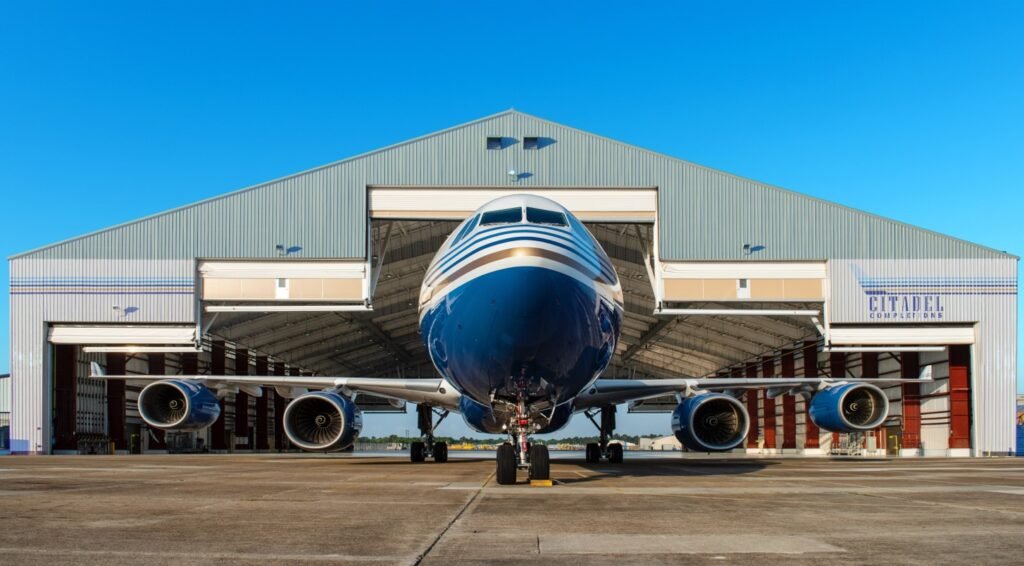The Importance of Aviation Hangar Doors in Aircraft Safety and Storage
 NIHVA Tech1
NIHVA Tech1In the aviation industry, hangar doors are far more than access points—they are a critical component of aircraft safety, protection, and operational efficiency. Whether for commercial airlines, private jets, or military aircraft, aviation hangar doors serve as a protective barrier against environmental elements and security threats.
This article explores the importance of aviation hangar doors and how they contribute to secure aircraft storage and streamlined operations.
The Role of Hangar Doors in Aircraft Protection
Safeguarding Aircraft from Environmental Hazards
Aircraft are substantial financial investments and require protection from weather extremes and environmental exposure. Properly engineered aviation hangar doors are essential in mitigating such risks.
Weather Resistance: Doors with weather-sealing prevent moisture ingress, which can corrode sensitive components such as landing gear and avionics.
UV Protection: Shielding aircraft from prolonged sun exposure prevents degradation of exterior paint and aircraft skin.
Temperature Regulation: Well-insulated doors help maintain internal climate control, reducing wear on systems sensitive to heat or cold.
NIHVA’s automatic industrial doors offer insulation and protection specifically tailored for aircraft hangars.
Enhancing Security for Aircraft and Facilities
High-quality hangar doors are a critical line of defense against unauthorized access and theft. Integration with digital locking systems, alarm setups, and remote-control access enhances security, especially in high-value storage zones.
For hangars requiring automated access with secure mechanisms, explore NIHVA’s industrial sliding doors, designed with reinforced security features.
Preventing Accidents and Operational Downtime
Malfunctioning or poorly balanced hangar doors pose safety risks to personnel and equipment. Sudden closures or motor failure can lead to property damage or personal injury. Investing in precision-engineered doors reduces these risks and ensures smooth, reliable operation.
NIHVA’s advanced industrial automation systems are designed to maintain operational continuity while minimizing downtime due to door malfunction.
Common Types of Aviation Hangar Doors
Selecting the appropriate hangar door type is essential to accommodate aircraft size, site constraints, and environmental challenges.
Sliding Hangar Doors: Offer wide openings for larger aircraft and are known for their durability.
Bi-Fold Hangar Doors: Space-efficient and suitable for high-wind areas.
Hydraulic Hangar Doors: Provide fast and smooth operation with strong structural support.
Fabric Hangar Doors: Lightweight and flexible, suitable for quick operation and minimal maintenance environments.
Each option can be tailored with NIHVA’s customization services to match your facility's requirements.
Key Features of High-Quality Hangar Doors
When evaluating aviation hangar doors, prioritize the following attributes for long-term performance:
Customization
Doors can be tailored to your hangar’s size, structure, and design preferences. NIHVA specializes in bespoke industrial doors for unique configurations.
Weatherproofing
Industrial-grade seals and corrosion-resistant materials ensure longevity and protection from wind, rain, and snow.
Automation
Modern aviation facilities require fast, automated access. NIHVA's automated entry systems offer smooth, remote-controlled functionality for operational efficiency.
Insulation
Energy-efficient doors help control indoor climates and reduce utility costs. Proper insulation keeps aircraft systems stable and improves personnel comfort.
Low Maintenance
Materials like aluminum and treated steel offer durability while reducing the frequency and cost of repairs.
Maintenance Tips for Hangar Door Longevity
Routine maintenance is essential for safety and long-term performance.
Conduct Monthly Inspections: Check for cracks, loose fasteners, or misalignment.
Lubricate Moving Components: Maintain hinges, tracks, and rollers to prevent friction-related wear.
Test Emergency Features: Ensure motorized and safety mechanisms are fully operational.
Clean Regularly: Keep door surfaces and tracks free from dirt and debris.
Partner with Experts: For complex systems, consult NIHVA’s maintenance and support team.
Frequently Asked Questions (FAQ)
1. What type of hangar door is best for large commercial aircraft?
Sliding and hydraulic hangar doors are ideal due to their wide openings and structural strength.
2. Can hangar doors be automated for remote operation?
Yes, NIHVA provides fully automated door systems with remote access and integrated safety features.
3. How often should hangar doors be serviced?
Basic checks should be conducted monthly, with professional servicing recommended at least annually.
4. Are NIHVA’s hangar doors customizable?
Yes, NIHVA offers tailored solutions based on your facility’s dimensions, operational needs, and security requirements.
Final Thoughts
Choosing the right aviation hangar door is a critical decision that affects not only the safety and security of your aircraft but also your facility’s operational efficiency. High-performance hangar doors offer protection from the elements, prevent unauthorized access, and ensure smooth, safe operations.
For tailored, reliable, and high-performance hangar door solutions, consult NIHVA Technologies—a trusted provider of engineered door systems for the aviation sector.
To request a consultation or learn more about available options, visit NIHVA’s contact page.
Read the full blog here : The Importance of Aviation Hangar Doors in Aircraft Safety and Storage
Contact Us
Subscribe to my newsletter
Read articles from NIHVA Tech1 directly inside your inbox. Subscribe to the newsletter, and don't miss out.
Written by

